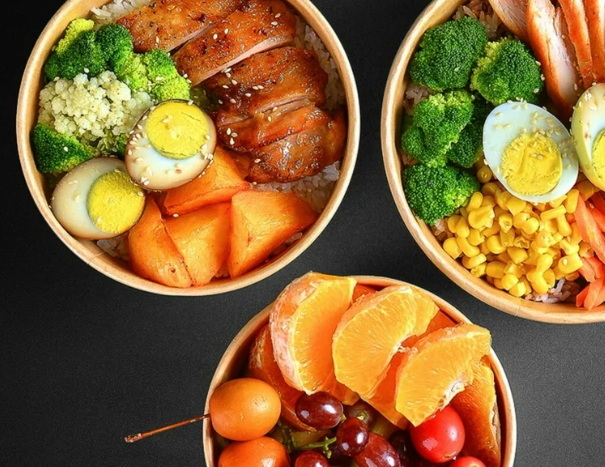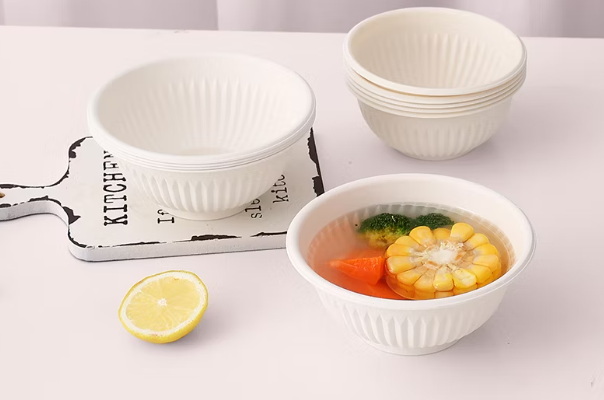
Content Menu
● Introduction to Disposable Rice Bowl Containers
>> Types of Materials Used
● Health Risks Associated with Disposable Rice Bowl Containers
>> Chemical Leaching
>> Health Impacts
● Structural Integrity Issues
>> Temperature Limitations
● Alternatives to Disposable Rice Bowl Containers
● Sustainable Packaging Solutions
>> Eco-Friendly Packaging Materials
>> Benefits of Sustainable Packaging
● Challenges in Implementing Sustainable Solutions
● Conclusion
● FAQs
>> 1. What are disposable rice bowl containers typically made of?
>> 2. Are all disposable plastic containers safe for hot food?
>> 3. What health risks are associated with using disposable plastic containers for hot food?
>> 4. What alternatives are available to disposable plastic containers?
>> 5. How can consumers safely use disposable plastic containers for hot food?
● Citations:
The use of disposable rice bowl containers for hot food has become a common practice in many parts of the world, especially in the context of takeaways and fast food. However, concerns about their safety have been raised due to the potential for chemical leaching and structural integrity issues when exposed to high temperatures. This article will delve into the safety aspects of using disposable rice bowl containers for hot food, exploring the types of materials used, potential health risks, and alternatives available.

Introduction to Disposable Rice Bowl Containers
Disposable rice bowl containers are typically made from plastic materials such as polypropylene (PP), polyethylene terephthalate (PET), or polystyrene (PS). Among these, PP is known for its heat resistance, making it suitable for holding hot foods for extended periods.
Types of Materials Used
1. Polypropylene (PP): Known for its durability and heat resistance, PP can withstand temperatures between 100°C to 120°C, making it ideal for hot foods. It is widely used in food packaging due to its ability to maintain structural integrity under high temperatures[1][6].
2. Polyethylene Terephthalate (PET): While PET is commonly used for cold foods, it is not as heat-resistant as PP and may not be suitable for very hot foods. PET containers are more often used for beverages and cold meals[1][6].
3. Polystyrene (PS): PS is less heat-resistant and not recommended for hot foods due to potential deformation and chemical leaching. It is often used for cold foods or as insulation in packaging[1][6].
Health Risks Associated with Disposable Rice Bowl Containers
When hot food is placed in disposable plastic containers, there is a risk of chemical leaching. These chemicals can include bisphenols (such as BPA) and phthalates, which are linked to endocrine disruption, carcinogenic effects, and neurodevelopmental issues.
Chemical Leaching
Chemical leaching is more pronounced when the food is fatty, salty, or acidic, as these conditions increase the rate of chemical migration into the food. This can lead to serious health complications over time, including reproductive issues and increased risk of certain cancers[7].
Chemical leaching from plastic containers is a significant concern when using them for hot foods. The risk is heightened with fatty or acidic foods, which can accelerate the leaching process.
Health Impacts
Exposure to chemicals like BPA and phthalates has been linked to a range of health issues. These include disruptions in human reproduction, which can lead to infertility, and an increased risk of conditions like diabetes and hypertension[7]. Children exposed to these chemicals may develop these illnesses earlier in life, highlighting the importance of avoiding such exposures.
Structural Integrity Issues
Disposable rice bowl containers, especially those made from materials like PS, may deform or crack when exposed to high temperatures, leading to structural failures that can compromise food safety.
Temperature Limitations
Most disposable plastic containers are not designed to withstand temperatures above 100°C for extended periods. Using them for very hot foods can lead to deformation and potential contamination. PP containers are an exception, as they can handle higher temperatures without significant structural compromise[1][6].
Alternatives to Disposable Rice Bowl Containers
Given the concerns associated with disposable plastic containers, several alternatives are being explored:
1. Compostable Containers: Made from materials like PLA (polylactic acid) or PBAT (polybutylene adipate-co-butylene terephthalate), these containers are biodegradable but may not be suitable for very hot foods due to temperature limitations. However, some plant-based materials like sugarcane bagasse offer better heat resistance[5][8].
2. Reusable Containers: Made from materials like stainless steel or glass, these are safe for hot foods and offer a sustainable alternative to disposable containers. They can be used multiple times, reducing waste and the need for single-use plastics[3].
3. Paper-Based Containers: Some paper containers are treated with chemicals to make them water- and grease-resistant, but these can also leach harmful substances like PFAS into food. However, untreated paper or natural fiber-based containers are safer alternatives[2][4].
4. Aluminium Foil Containers: These are oven-safe and can be used for hot foods. They are durable and provide good insulation, making them suitable for takeaway meals[3].
5. Bagasse Containers: Made from sugarcane pulp, these containers are biodegradable, compostable, and suitable for hot foods. They offer a sustainable alternative to traditional plastic containers[8][12].

Sustainable Packaging Solutions
The shift towards sustainable packaging is gaining momentum, with companies developing innovative solutions to reduce plastic waste. For instance, Sabert Europe's Hot2Go pack uses natural fiber-based materials and is fully recyclable, offering a 100% recyclable solution for hot food packaging[4].
Eco-Friendly Packaging Materials
- Natural Fibers: Materials like paperboard and bagasse are becoming popular for hot food packaging due to their biodegradability and compostability[4][12].
- Bioplastics: Derived from renewable resources, bioplastics offer a more sustainable alternative to traditional plastics. They can be composted and reduce dependence on fossil fuels[5][8].
Benefits of Sustainable Packaging
1. Environmental Impact: Sustainable packaging reduces plastic waste and minimizes environmental pollution. It promotes recycling and composting, which can lower greenhouse gas emissions and replenish soil nutrients[10][12].
2. Consumer Perception: Businesses adopting eco-friendly packaging are seen as environmentally conscious, which can enhance brand reputation and attract customers who prioritize sustainability[9][12].
3. Regulatory Compliance: Many regions are implementing regulations to reduce single-use plastics. Using sustainable packaging helps businesses comply with these regulations and avoid potential fines[4][10].
Challenges in Implementing Sustainable Solutions
While sustainable packaging offers numerous benefits, there are challenges to its widespread adoption:
1. Cost: Eco-friendly packaging materials often have a higher cost compared to traditional plastics. This can be a barrier for small businesses or those with tight profit margins[10].
2. Infrastructure: The availability of composting facilities for biodegradable materials can be limited in some areas, making it difficult to dispose of these containers responsibly[8][10].
3. Consumer Awareness: Educating consumers about the importance of sustainable packaging and how to properly dispose of biodegradable containers is crucial for successful implementation[9][12].
Conclusion
While disposable rice bowl containers offer convenience, their safety for hot food is questionable due to potential chemical leaching and structural integrity issues. Alternatives like compostable or reusable containers are gaining popularity as safer and more sustainable options. As consumers become more environmentally conscious, the demand for eco-friendly packaging solutions is expected to grow, driving innovation in the packaging industry.

FAQs
1. What are disposable rice bowl containers typically made of?
Disposable rice bowl containers are commonly made from plastic materials such as polypropylene (PP), polyethylene terephthalate (PET), and polystyrene (PS).
2. Are all disposable plastic containers safe for hot food?
No, not all disposable plastic containers are safe for hot food. Polypropylene (PP) is generally suitable, but other materials like polystyrene (PS) may deform or leach chemicals when exposed to high temperatures.
3. What health risks are associated with using disposable plastic containers for hot food?
The primary health risks include chemical leaching, which can lead to endocrine disruption, carcinogenic effects, and neurodevelopmental issues.
4. What alternatives are available to disposable plastic containers?
Alternatives include compostable containers made from bioplastics, reusable containers made from materials like stainless steel or glass, and paper-based containers without harmful coatings.
5. How can consumers safely use disposable plastic containers for hot food?
Consumers should choose containers made from heat-resistant materials like PP and avoid using them for very hot foods if they are not designed for such temperatures.
Citations:
[1] https://www.info.gov.hk/gia/general/200802/20/P200802200188.htm
[2] https://www.quitplastic.in/post/the-hidden-dangers-of-single-use-paper-food-containers
[3] https://supplyexpress.co.uk/takeaway-packaging/hot-food-packaging.html
[4] https://packagingeurope.com/news/sabert-boxes-hot-food-to-go-in-fibre-based-hot2go-pack-with-rpet-window/11855.article
[5] https://www.richmondadvantage.com/shop-by-category/green-eco-friendly/hot-food-containers-lids.html
[6] https://www.cfs.gov.hk/english/multimedia/multimedia_pub/multimedia_pub_fsf_20_04.html
[7] https://www.modernghana.com/lifestyle/3733/eating-hot-food-in-plastic-containers-can-lead-to-serious-he.html
[8] https://greenpaperproducts.com/collections/compostable-containers
[9] https://thepureoption.com/biodegradable-compostable-hot-food-packaging-457-c.asp
[10] https://foodpackagingdirect.co.uk/collections/biodegradable-food-containers
[11] https://www.greenolives.com.cn/product/mircowave-safe-corn-starch-biodegradable-eco-bowls-for-hot-soup-salad/
[12] https://takeawaypackaging.co.uk/online-shop/hot-food-containers/
[13] https://colpacpackaging.com/product-category/hot-food-to-go/
[14] https://chemtrust.org/food-packaging/
[15] https://www.consumerreports.org/health/food-contaminants/dangerous-pfas-chemicals-are-in-your-food-packaging-a3786252074/
[16] https://damatiplastics.com/different-types-of-containers-that-can-be-used-for-asian-takeout/
[17] https://www.reddit.com/r/cookingforbeginners/comments/13mz8e9/is_it_safe_to_put_hot_food_in_tupperware_and_then/
[18] https://www.easyngreen.com/products/16oz-biodegradable-16oz-bowls-with-lid-for-disposable-food-packaging-rice-98/
[19] https://www.food.gov.uk/news-alerts/news/notice-to-retailers-plastic-containers-or-utensils-containing-bamboo
[20] https://en.wikipedia.org/wiki/Disposable_food_packaging
[21] https://www.cuttheplastics.hk/index.php/en/information-on-alternatives-to-disposable-plastic-products
[22] https://www.biopak.com/hk-ch/containers-lids/containers?p=2
[23] https://www.bioleaderpack.com/top-10-most-popular-style-of-biodegradable-disposable-food-containers/
[24] https://gmz.ltd/best-types-of-eco-friendly-food-packaging-for-restaurants/
[25] https://www.reddit.com/r/MealPrepSunday/comments/1d4cngh/does_anyone_happen_to_know_what_containers_these/
[26] https://merways.com/en/assortment/reusable-food-containers-for-food-transport/
[27] https://www.greenmanpackaging.com/collections/biodegradable-compostable-hot-food-takeaway-boxes
[28] https://www.biopak.com/au/containers-lids
[29] https://greenpaperproducts.com/collections/compostable-containers/compostable-hot-food-containers
[30] https://www.seriouseats.com/best-food-thermoses-5193419
[31] https://www.bioleaderpack.com/exploring-different-materials-for-disposable-bowls/
[32] https://www.vegware.hk/hk/catalogue/
[33] https://www.mamavation.com/product-investigations/paper-plates.html
[34] https://www.cbc.ca/news/science/pfas-compostable-food-packaging-1.6794550
[35] https://www.reddit.com/r/AskCulinary/comments/1rv41x/plastic_food_safe_containers_for_hot_food_liquids/

















